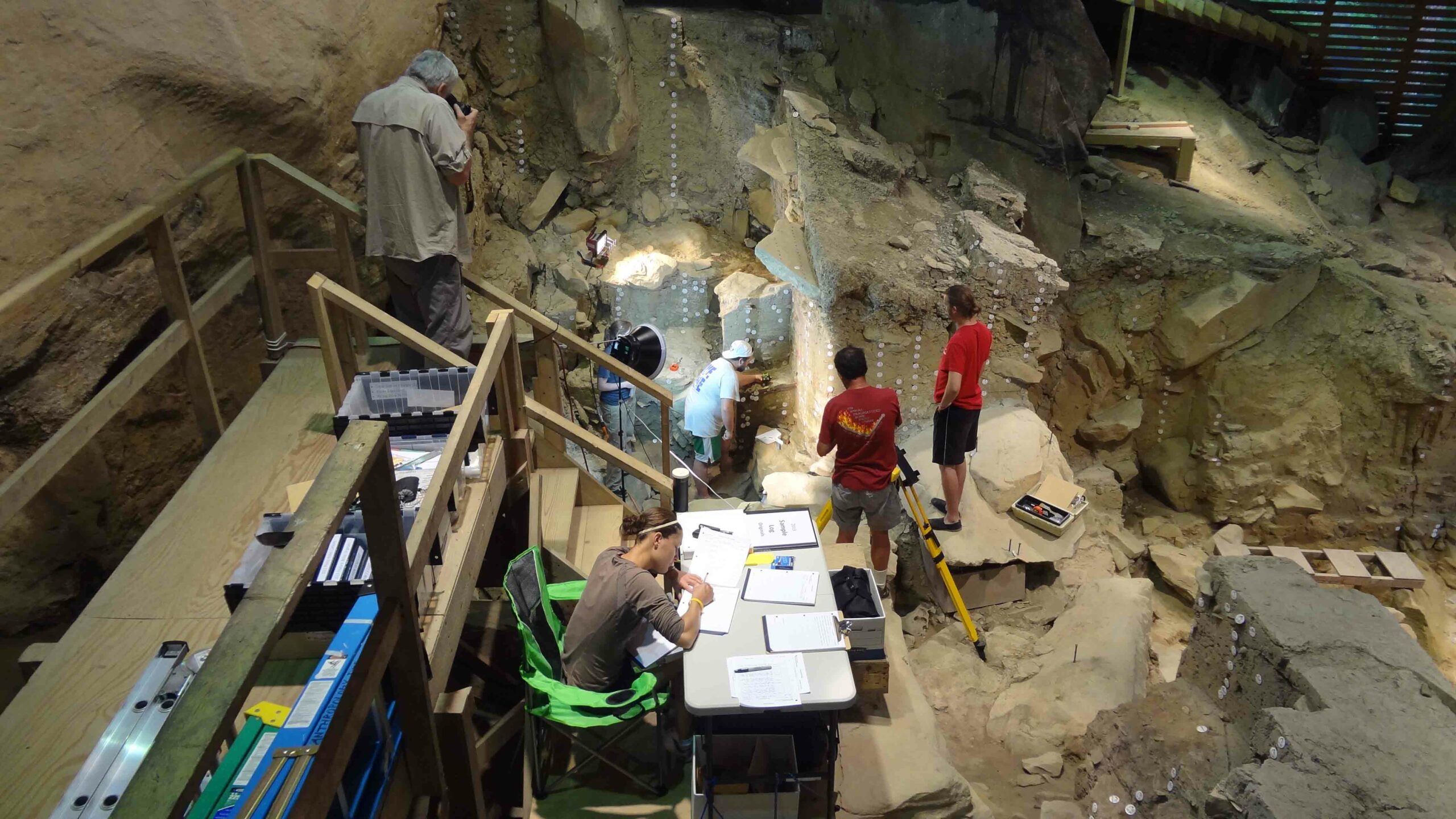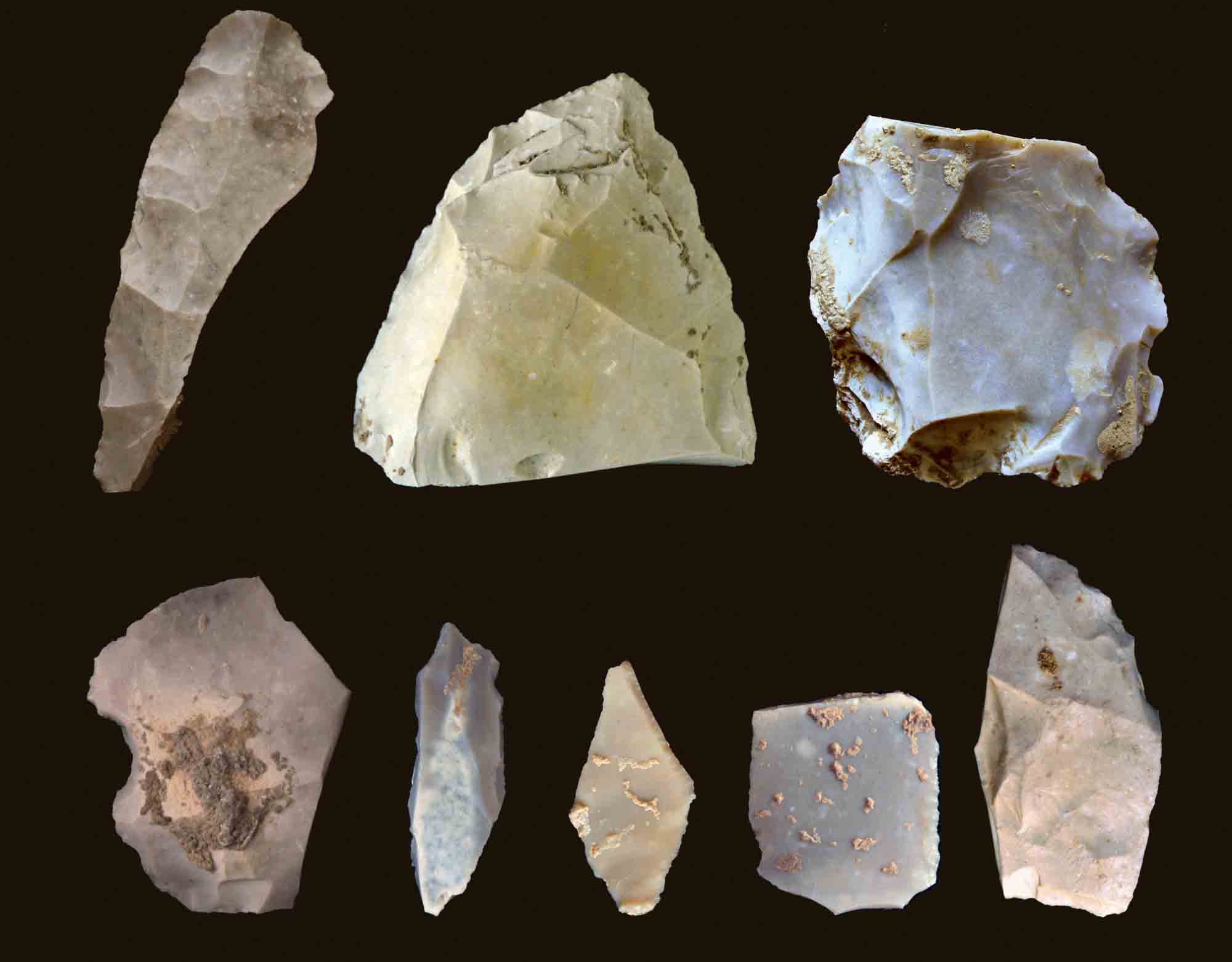
Stone tools and fire features are always great indicators of human activity at an archaeological site. And human bones are the best evidence excavators can hope to find. But humans also leave behind coprolites, or fossilized feces. Thanks to the extremely dry environment inside Oregon’s Paisley Caves, University of Oregon archaeologist Dennis Jenkins and his team came across five human droppings that dated to older than 14,000 years over the course of nine years of digging there.
In addition, they also found three points that Jenkins believes belong to what is known as the Western Stemmed tradition. Unlike Clovis points, which have a signature notch at their base so that wooden spears can be attached, these have constricted bases. They have also clearly been struck from smaller pieces of stone than the typical Clovis counterpart. Two human coprolites dated to just over 13,000 years ago were found within eight inches of one of the points. At the very least, this evidence suggests that there was a parallel occupation of the continental United States by both the Clovis people and a second group who made different types of tools.
Evidence of baskets and rope, plant fibers, wooden artifacts, and animal bones were also found at the caves. Pollen and other plant minerals extracted from the coprolites suggest that people came to the site in the spring and early summer. They also provide evidence that the people in the caves ate everything from edible roots to bison, horse, and even animals as big as mastodon.
Jenkins, for his part, thinks Paisley Caves were not a destination location. “There is very little debitage [residue from production] from stone tools over time,” he explains. “The archaeology suggests this is a place where people are passing by—something, weather or resources nearby, or the time of day, makes you stop in.”












